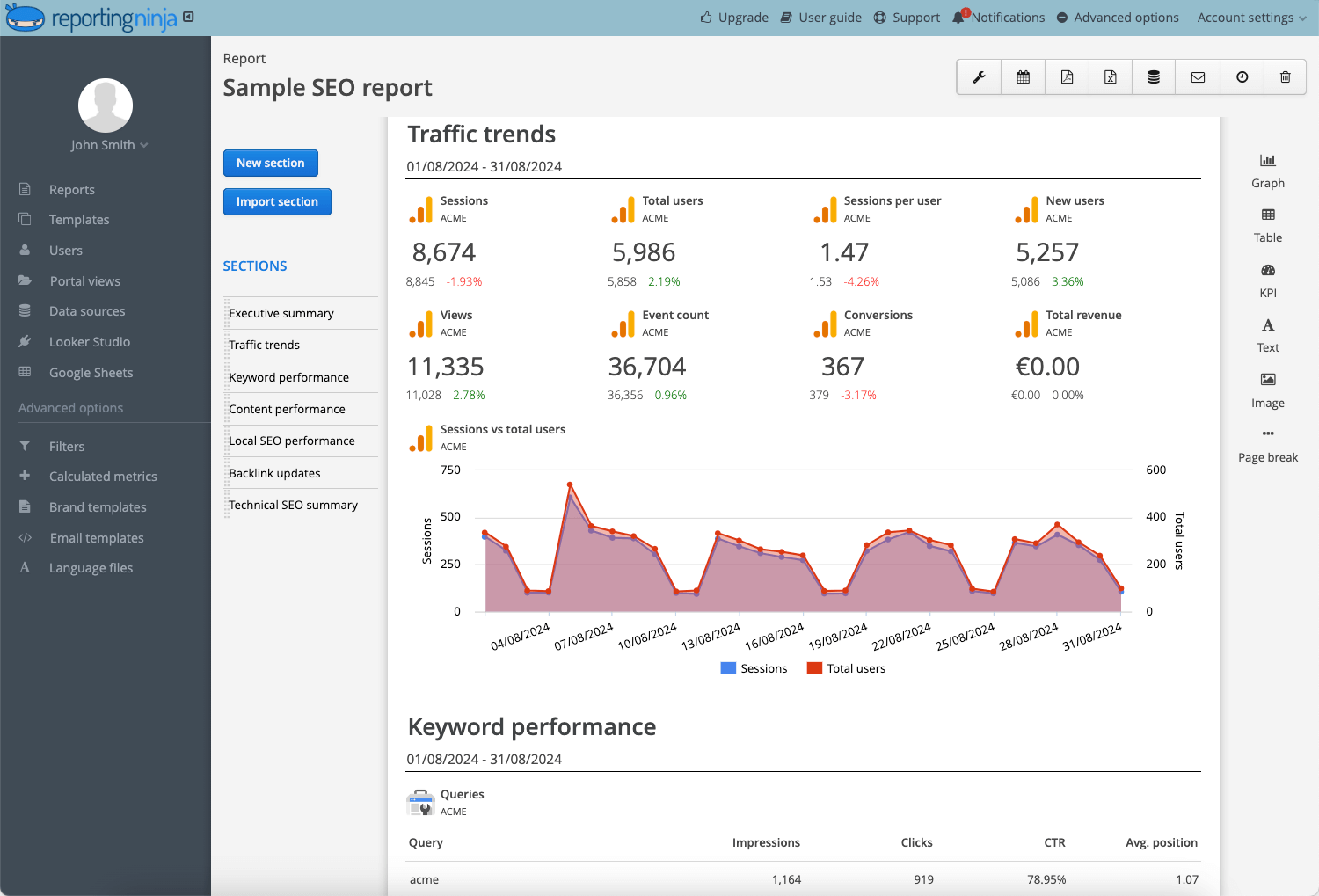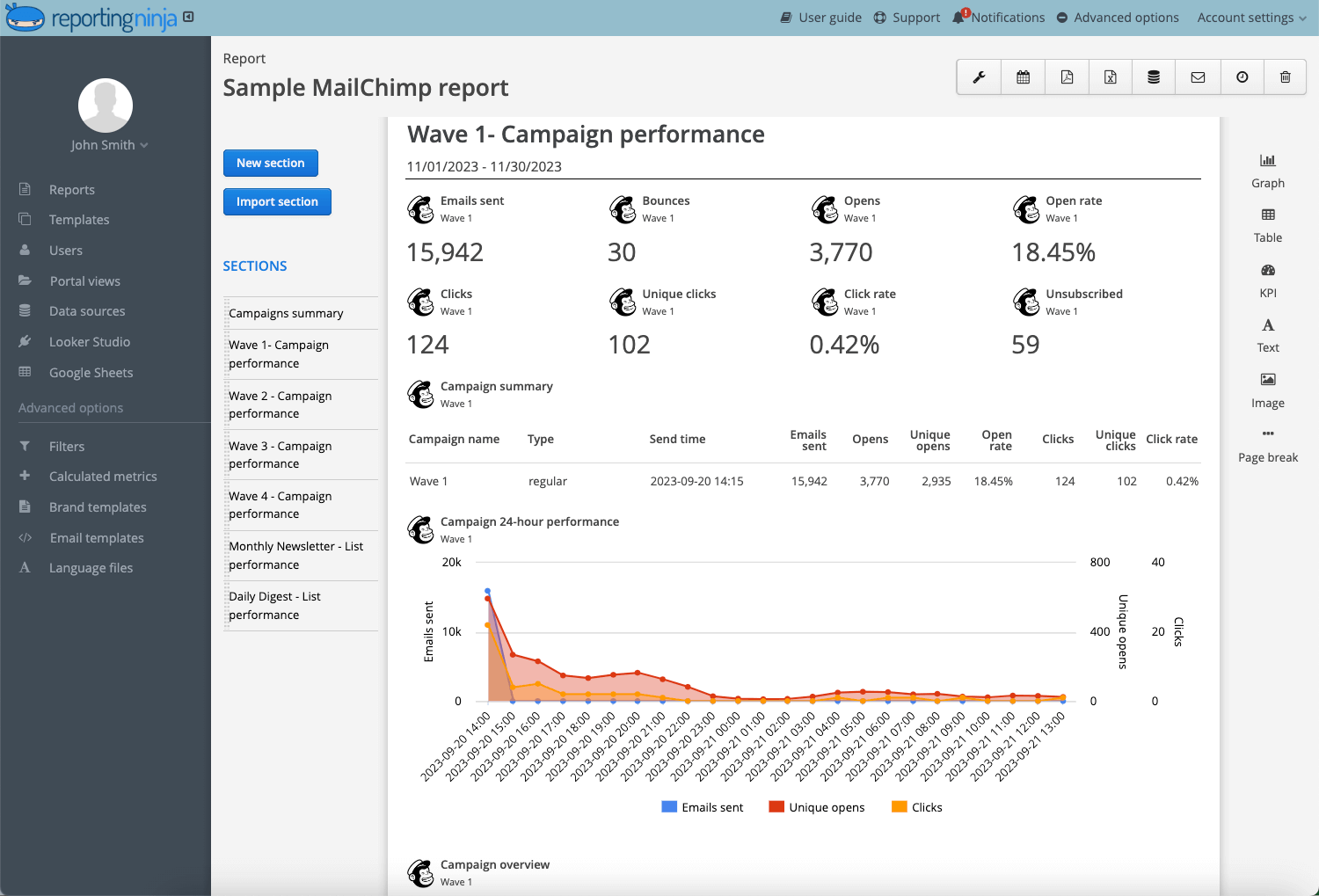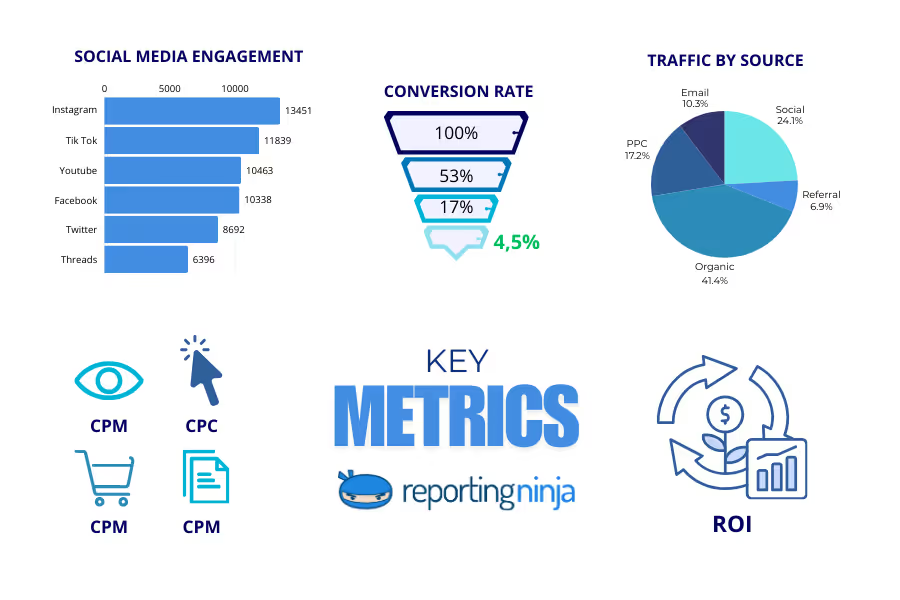2025 Multichannel campaign management: definition & tactics


Managing campaigns across multiple platforms is harder than it looks. Messages get lost, data sits in silos, and performance tracking becomes unreliable when every channel reports in isolation.
Multichannel campaign management fixes this by centralizing efforts across email, social, paid, and SEO.
In this guide, you’ll learn what it is, why it matters, and the tactics to run campaigns that stay consistent, efficient, and measurable.
Multichannel campaign management is the process of planning, running, and measuring campaigns across several platforms from one place. It’s not just a tool—it’s a way of aligning your strategy, data, and teams so every channel works together.
This covers email sequences, social posts, paid ads, SEO content, SMS, and even offline channels like events or print. Instead of managing each in isolation, everything is coordinated through a single system.
Take a product launch as an example. An agency might run Instagram ads, publish blog posts for SEO, and send email campaigns to existing customers. With multichannel campaign management, all three connect: the messaging stays consistent, performance data flows into one dashboard, and attribution shows which channel drives results.
The benefit is clear. You cut wasted effort, avoid contradictory messaging, and get reporting that reflects the true impact of your campaigns.
Running effective campaigns across channels takes structure and the right tools. These tips will help you build campaigns that stay consistent and measurable.
Reporting Ninja simplifies the hardest part of multichannel campaigns: reporting. Instead of exporting data from each platform, you deliver one branded dashboard showing performance across email, social, paid, and SEO. It even helps when creating a local SEO report that combines insights from multiple channels for localized visibility.

It saves hours every week, eliminates spreadsheet errors, and gives clients or stakeholders a consistent, professional view of results.
Agencies can white-label reports, while in-house marketers use them to compare channels side by side and decide where to shift budget for maximum impact.
Every channel has different strengths. Define what success looks like before launching—click-throughs for email, engagement for social, conversions for paid. Setting goals upfront makes it easier to allocate budget and track what’s actually driving value.

Not all audiences should see the same message. Use behavior, lifecycle stage, or channel preference to build segments. For example, retarget recent visitors with ads, while nurturing older leads through email sequences. This improves relevance and prevents wasted spend.
Automation helps scale campaigns, but it can’t replace strategic oversight. Set rules for scheduling and targeting, but review performance regularly to catch issues (like ad fatigue or misaligned messaging) that algorithms can’t fix on their own.
Consistency is critical. Adapt creative to fit the format of each channel, but keep the core message unified. A product launch, for instance, should carry the same value proposition in the subject line of an email as it does in a social ad.
Multichannel campaign management works best when strategy and execution align. Use tools like Reporting Ninja to handle the complexity of reporting, and apply these tactics to keep campaigns structured, efficient, and effective.
{{cta-block-v1}}
Strong multichannel campaigns share a set of fundamentals. Without them, it’s difficult to keep messaging consistent, measure performance accurately, or scale campaigns with confidence.
Campaign data from every channel should flow into a single source of truth. This prevents silos, improves attribution, and ensures you’re making decisions with the complete picture in view. Without it, teams waste time reconciling reports and risk misallocating budget based on partial insights. Tools like Reporting Ninja pull channel data into one dashboard, making that ‘single source of truth’ practical instead of theoretical.
Effective campaigns recognize that not all customers are the same. Go beyond basic demographics by segmenting based on behaviors, lifecycle stage, or preferred channel. For example, new leads might receive awareness-level social ads, while loyal customers get targeted upsell offers via email. Segmentation ensures messaging stays relevant.
Segmentation sets the stage, but personalization makes campaigns resonate. Tailor subject lines, ad copy, or landing pages to individual preferences and actions. Even small touches (like product recommendations or content linked to browsing history) raise engagement. The key is maintaining brand consistency while ensuring each touchpoint feels specific and timely.
Campaigns fail when channels operate in isolation. An integrated strategy aligns messaging, timing, and creative across platforms so they reinforce each other. For instance, an email announcement timed with paid ads and organic social posts builds momentum. Each channel plays a role, but the message remains unified.
Every campaign needs clear, measurable goals. Set both channel-specific metrics (such as open rates for email or CTR for ads) and overall outcomes like conversions or ROI. Regularly track these KPIs to identify what’s working and where to optimize. Without defined measures, it’s impossible to prove impact or grow campaigns sustainably. With Reporting Ninja, KPIs from email, social, paid, and SEO all sit side by side, so you can compare performance without juggling exports.

These five characteristics form the foundation of multichannel success. They keep campaigns structured, measurable, and consistent across every touchpoint—exactly what’s needed to maximize both performance and ROI.
When campaigns are properly managed across channels, the results go beyond smoother workflows; they directly impact performance, client satisfaction, and growth.
Unified messaging increases engagement, and shared data shows which channels actually drive conversions. For example, attribution might reveal that retargeting ads outperform broad display campaigns. With this visibility, you can reallocate budget quickly and double down on what works instead of relying on assumptions.
A consistent experience across touchpoints makes it easier for prospects to progress from awareness to conversion. Someone who clicks a paid ad, then receives a follow-up email and sees aligned content on social, experiences one cohesive story. This reduces confusion and keeps the brand message top of mind.
Centralized management cuts duplication. Creative doesn’t need to be rebuilt for each platform, and reporting doesn’t require hours of spreadsheet work. Those saved hours can be reinvested into testing, refining offers, or producing new content—activities that directly drive growth rather than just keeping the engine running.
For agencies, clear and transparent reporting builds trust. Clients don’t want to sift through raw exports; they want to see results at a glance. Providing unified dashboards makes performance easy to understand and shows accountability, reducing friction in conversations and strengthening long-term client retention.
Sign up for a 15 days free trial. No credit card required.
